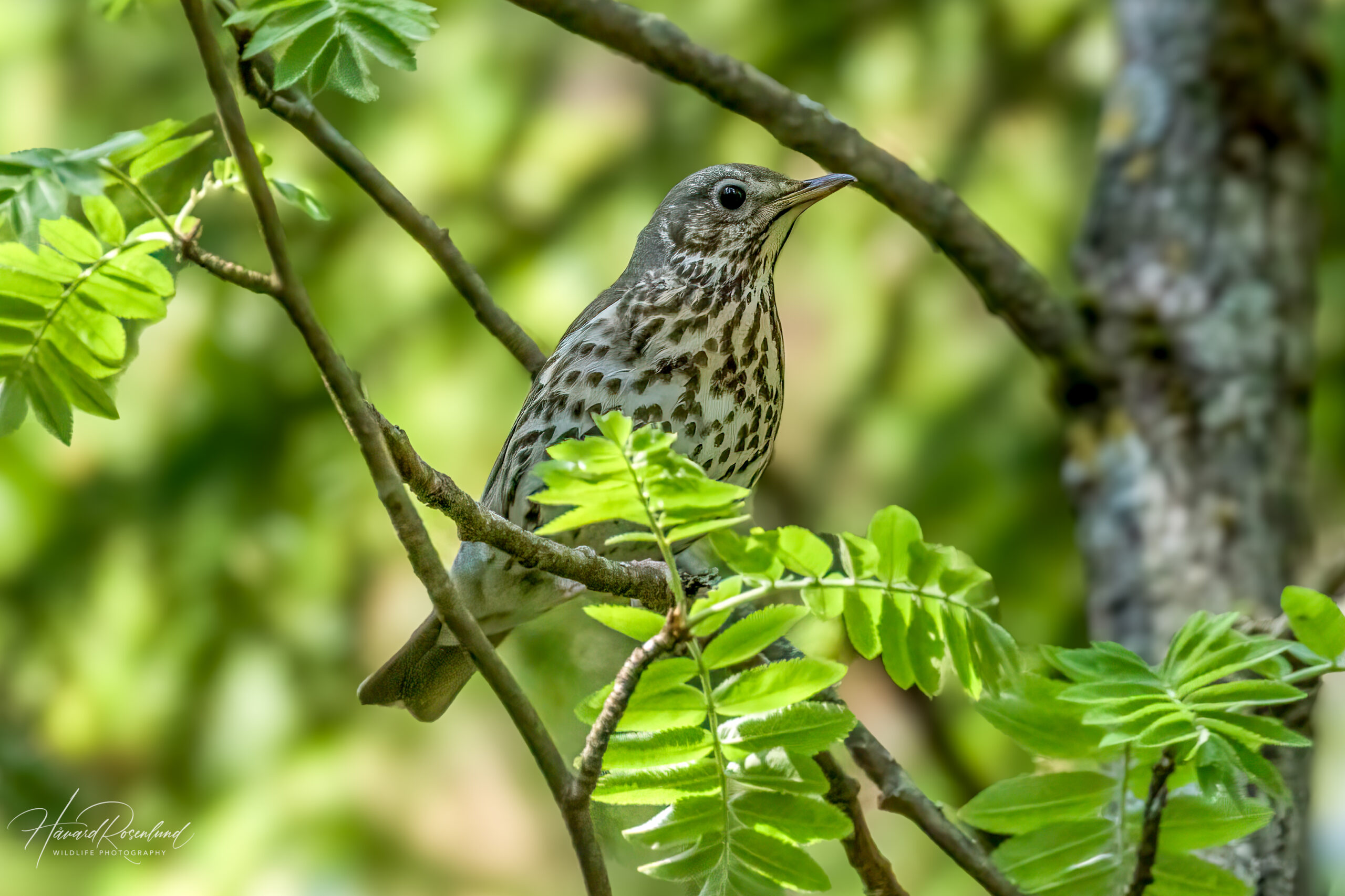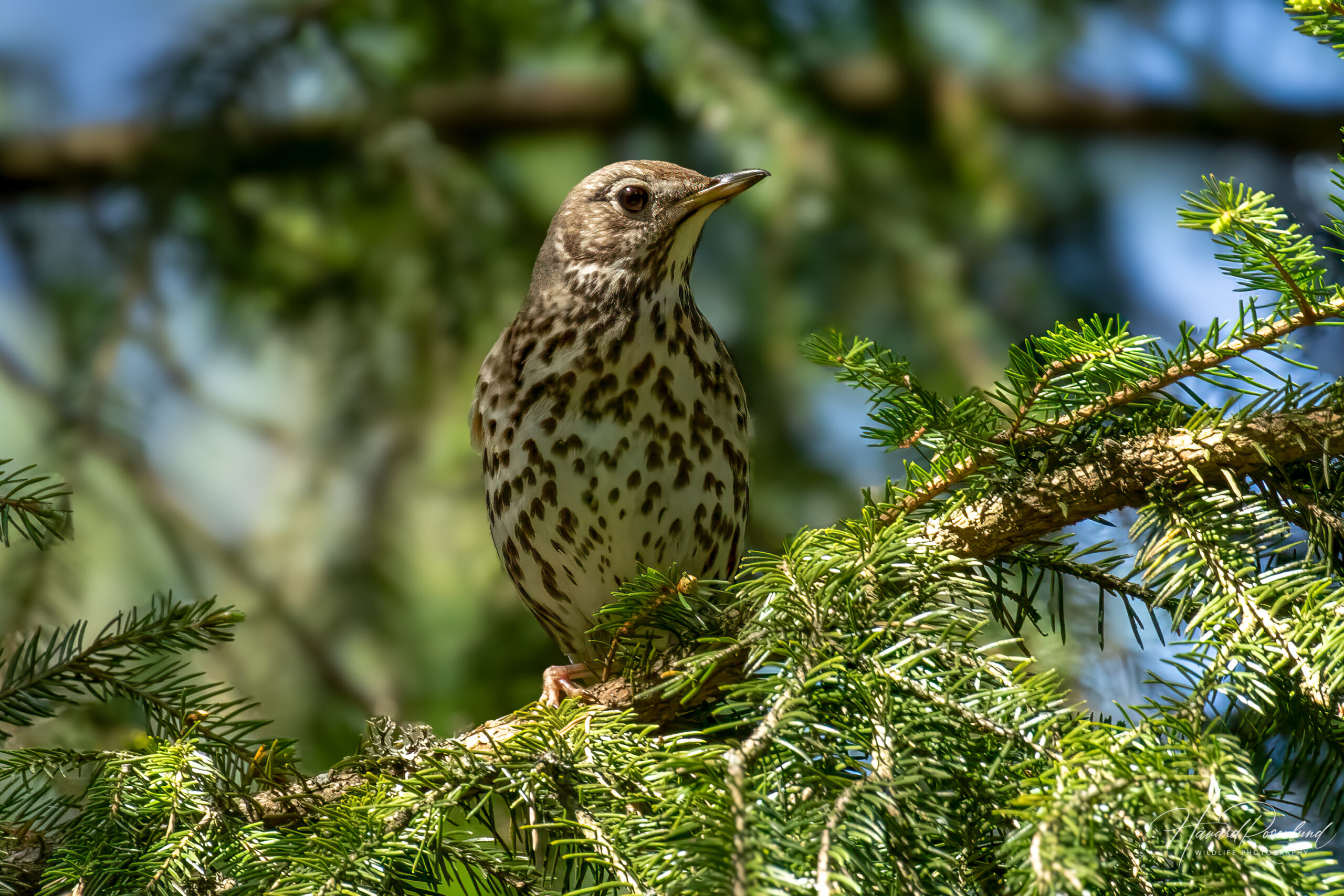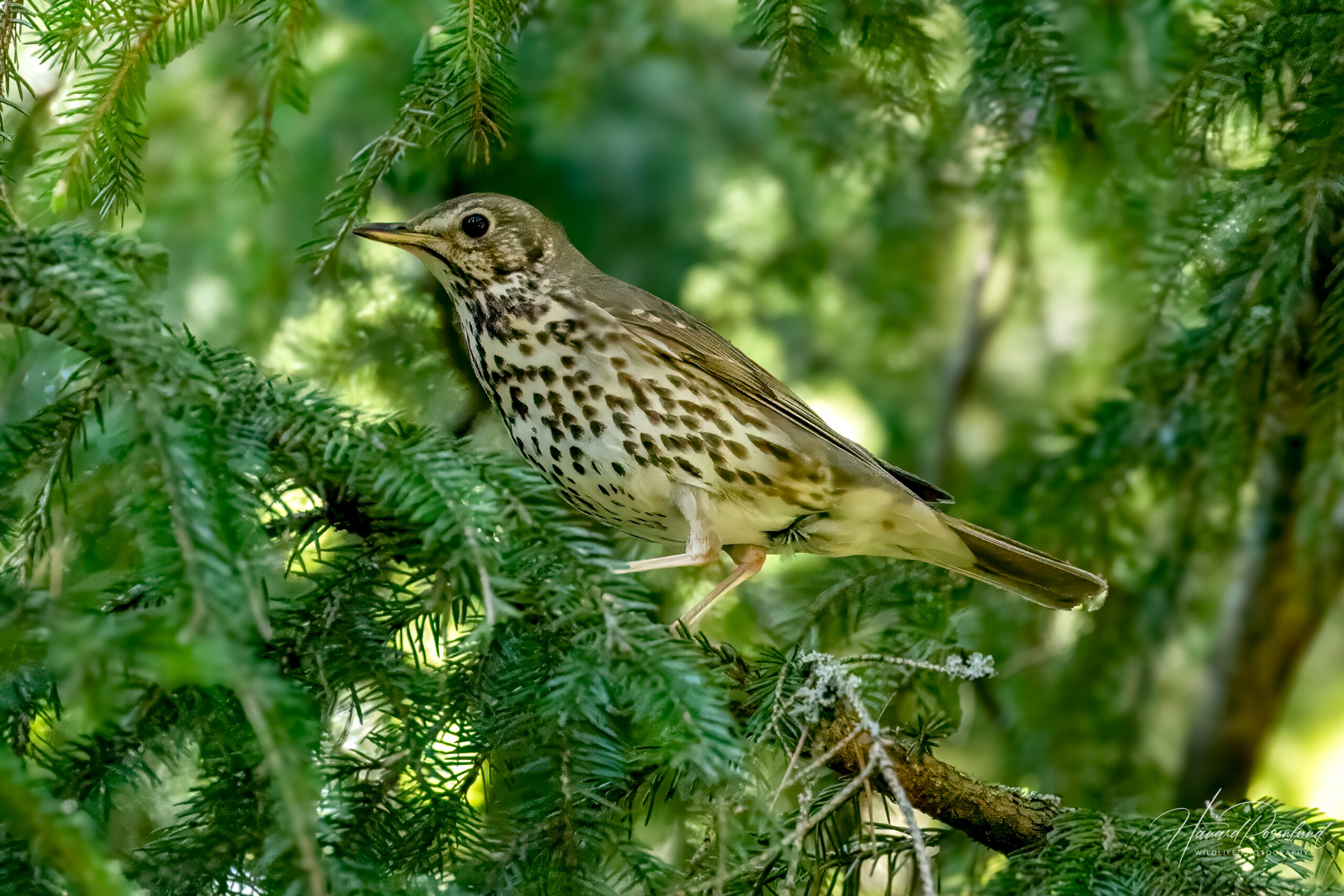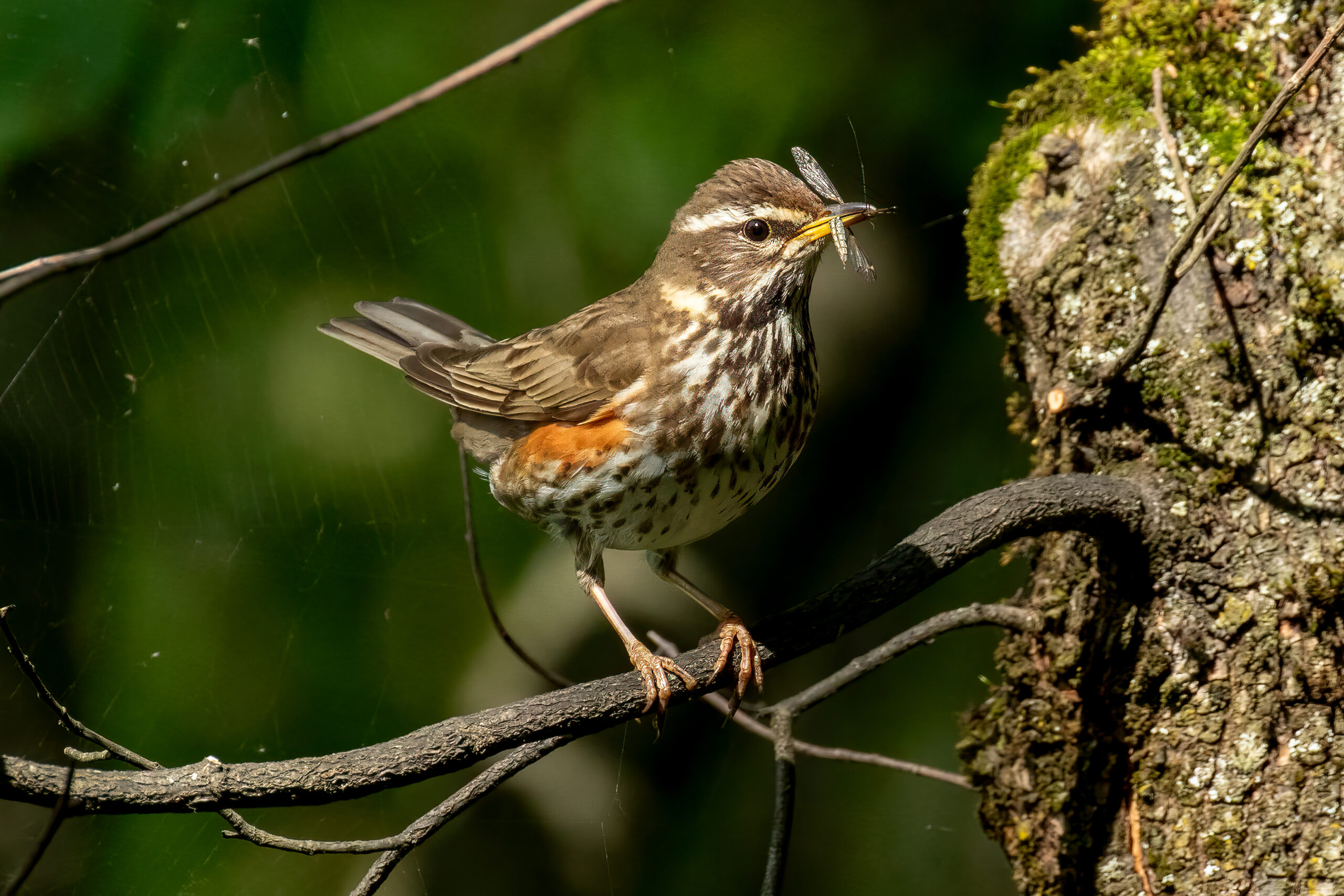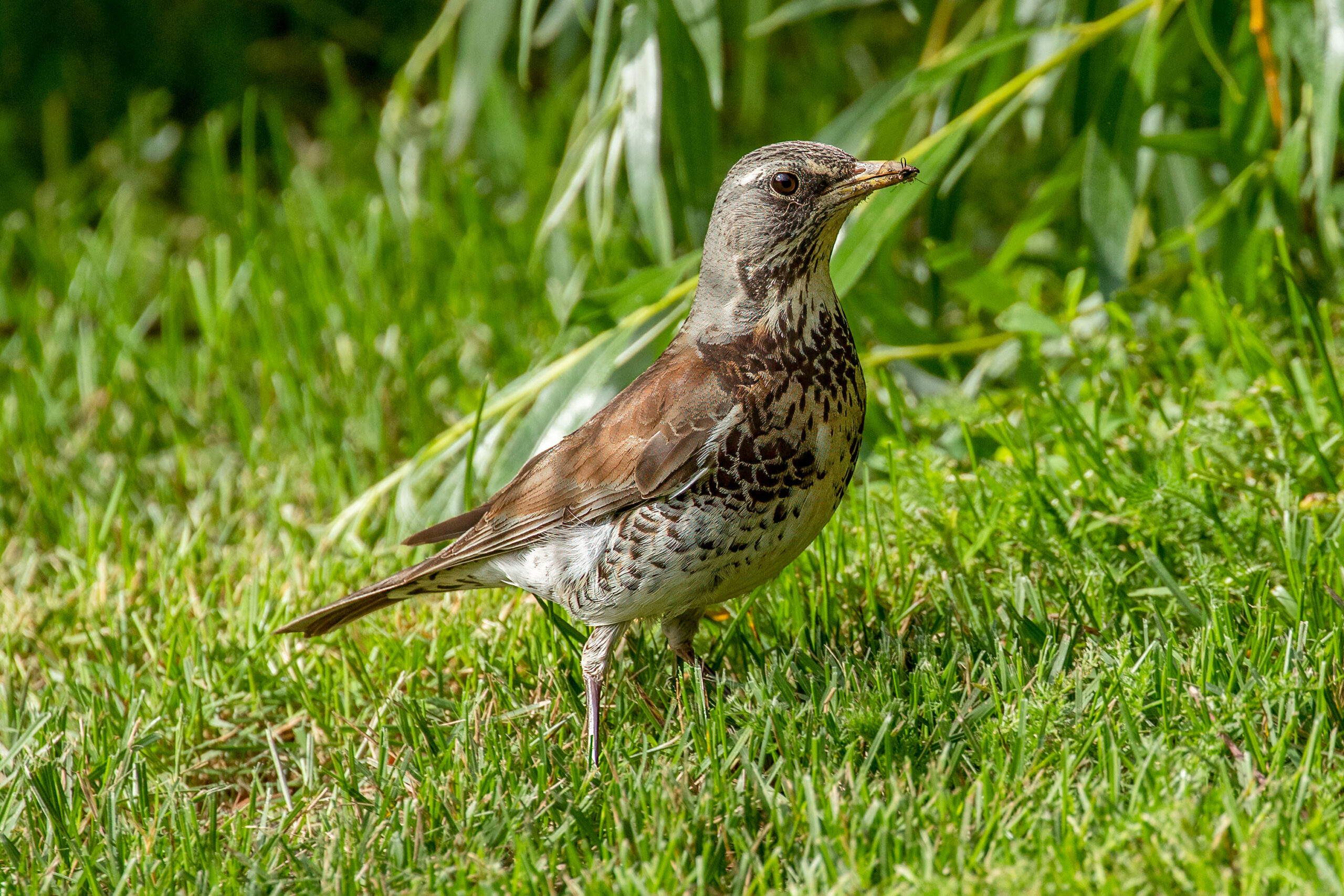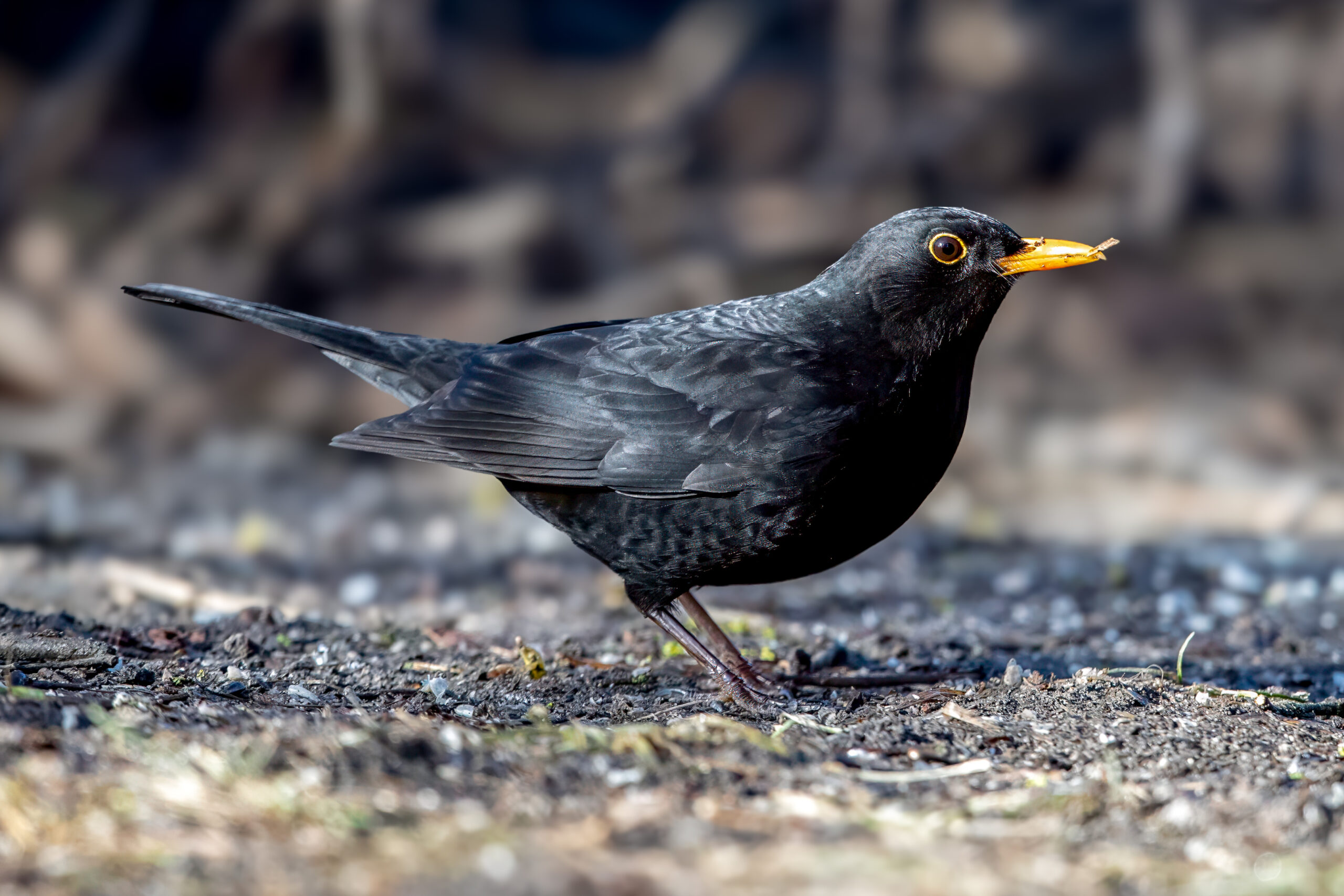Description
The song thrush (Turdus philomelos) is a small thrush with a range that spans across much of Europe, western Asia, and parts of northern Africa. There are introduced populations in New Zealand and Australia. This thrush is identifiable by its brown back and cream underbelly adorned with distinct dark arrow-shaped spots. It measures approximately 23 cm (9.0 in) in length, with a wingspan of 33-36 cm (13.0-14.2 in), and weighs around 50-107 grams (1.8-3.8 oz). Notable for its melodious song, the bird is capable of repeating various musical phrases two to four times and has a diverse repertoire of short trills, stretched out notes, and mimicry.
The song thrush is very similar in appearance to the mistle thrush (Turdus viscivorus), which is much larger, is more greyish, have round and not arrow-shaped spots on its belly, as well as a song that is more similar to that of a blackbird (Turdus merula) than a song thrush.
Diet & habitat
Song thrushes thrive in woodland, gardens, parks, and scrubland, showing a preference for moist, shaded areas with dense vegetation. They primarily feed on snails, insects, and earthworms, employing a distinctive method of feeding—smashing snails against rocks to break their shells. Their diet also includes fruit and berries, especially in winter.
Migration
The song thrush exhibits varied migration behavior; while birds in the northern parts of its range, such as Scandinavia and Russia, migrate southwards to western Europe and the Mediterranean during winter, those living in milder regions are often sedentary. The migration occurs as daylight decreases and temperatures drop, triggering their southward journey.
Nesting
Breeding season for song thrush begins in early spring, with the construction of a cup-shaped nest made from grass, leaves, and mud, situated in bushes or trees. A typical clutch comprises three to five bluish eggs, which are incubated primarily by the female for about 14 days. Fledglings leave the nest approximately two weeks after hatching, though they are often cared for by parents for several more weeks. Song thrushes may have two or three broods per year, but often only one in the northern part of their range.
Status
The song thrush is widespread and numerous, and its overall population is believed to be increasing in numbers. It is listed as least concern on the IUCN Red List. There have been declines in parts of its range, and it may be vulnerable to changes in agricultural practices, loss of habitat, pesticides, and predation.




